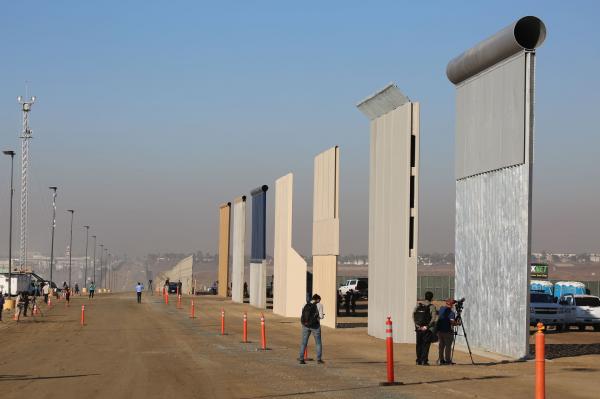
Jan. 6 (UPI) — The Trump administration wants Congress to approve nearly $18 billion over the next decade for construction of a border wall with Mexico.
The Department of Homeland Security plan would include 316 miles of new fencing and 407 miles of reinforced fencing, according to documents described to The Wall Street Journal by two congressional sources. In all, about half of the 2,000 miles along the southwest border would be contained.
The agency wants a total of $33 billion on border spending with $15 billion for technology, personnel and roads.
The congressional source told NBC News that request won’t likely be dealt with in upcoming funding discussions. Trump has already secured funding for 72 miles in areas near San Diego and Texas’ Rio Grande Valley.
The Senate needs 60 votes to approve the spending and with only 51 Republicans, the spending plan needs help from Democrats. Trump has pressured Democrats to approve the border funding in exchange for protecting 700,000 young immigrants from deportation through the Deferred Action for Childhood Arrivals program. The DACA system, implemented under former President Barack Obama, expires March 5 under an executive order from Trump.
“It’s outrageous that the White House would undercut months of bipartisan efforts by again trying to put its entire wish-list of hardline anti-immigrant bills — plus an additional $18 billion in wall funding — on the backs of these young people,” Democratic Sen. Dick Durbin of Illinois, the minority whip, said in a statement.
Durbin said Democrats will consider reasonable border security measures to pass the Dream Act into law.
“President Trump has said he may need a good government shutdown to get his wall. With this demand, he seems to be heading in that direction,” Durbin said.
During the presidential campaign, President Donald Trump said he wanted to construct a “big, beautiful wall” on the border and assured that Mexico would pay for it.
Mexico has repeatedly said it won’t fund it and Trump’s estimated costs have risen from an initial $4 billion to $10 billion or less in April 2017.





